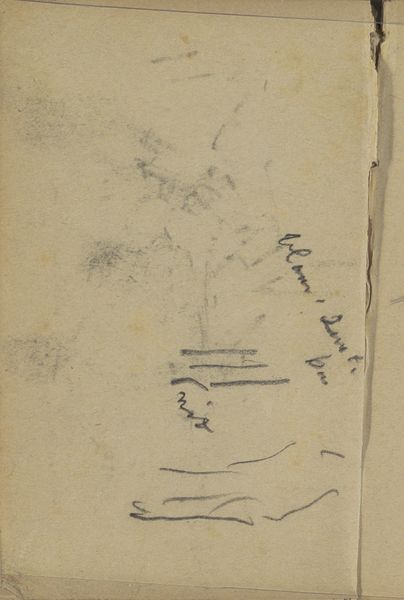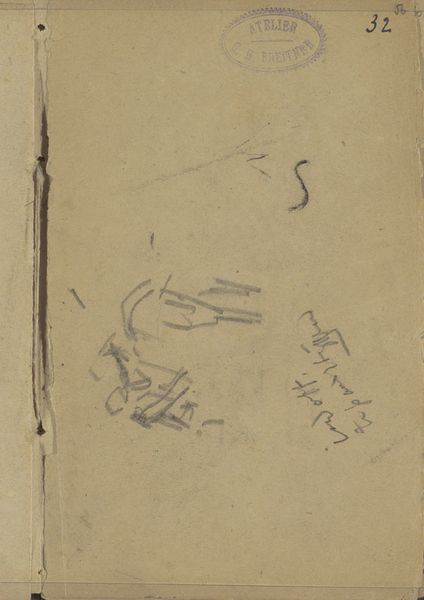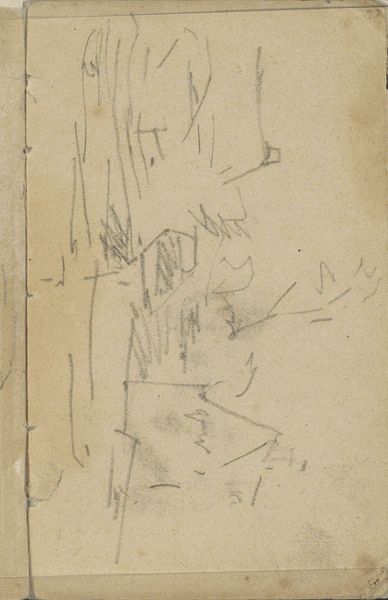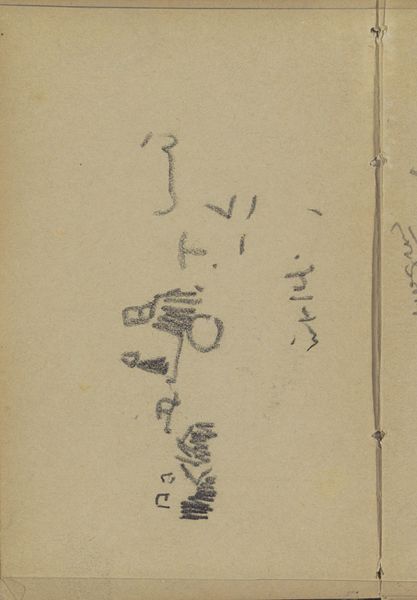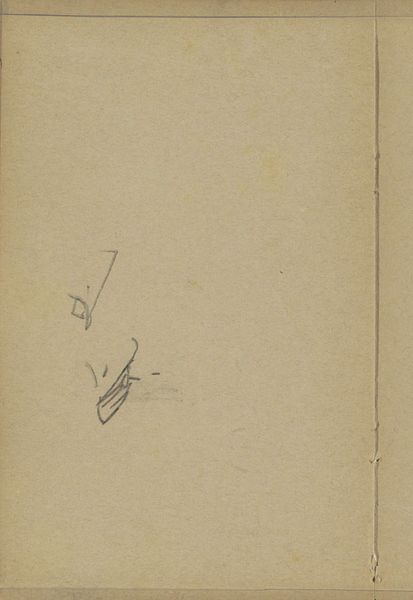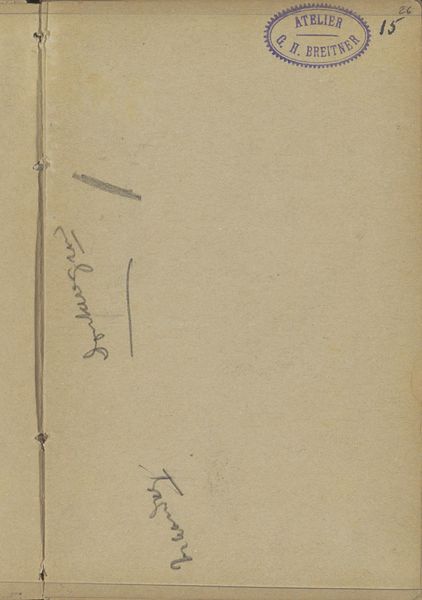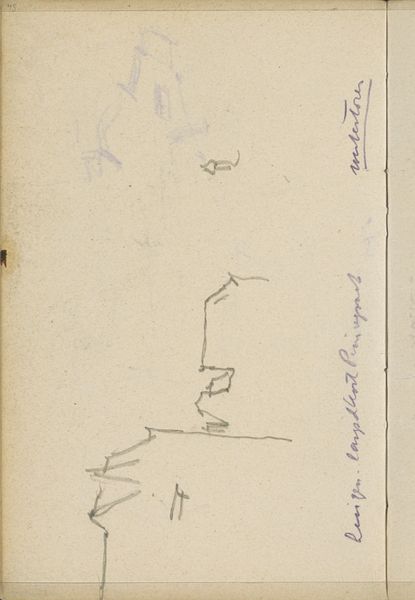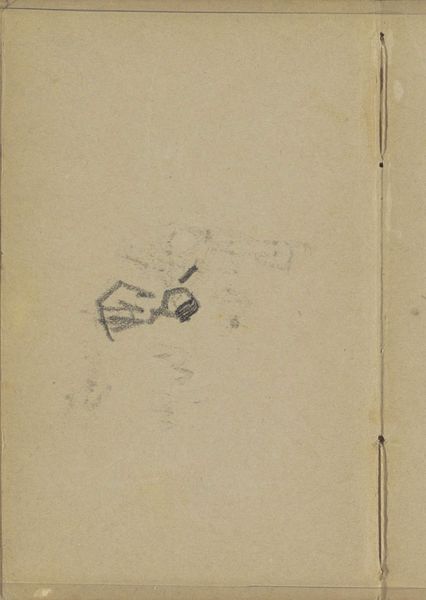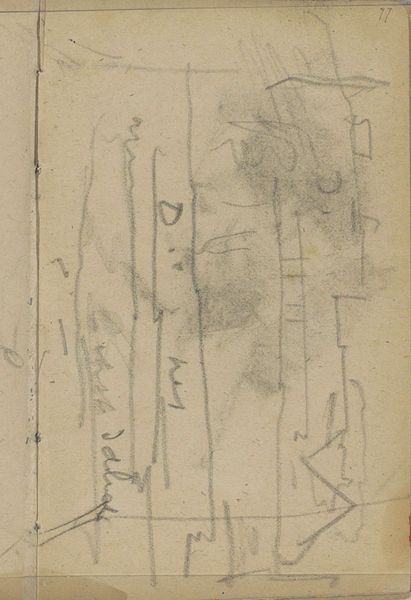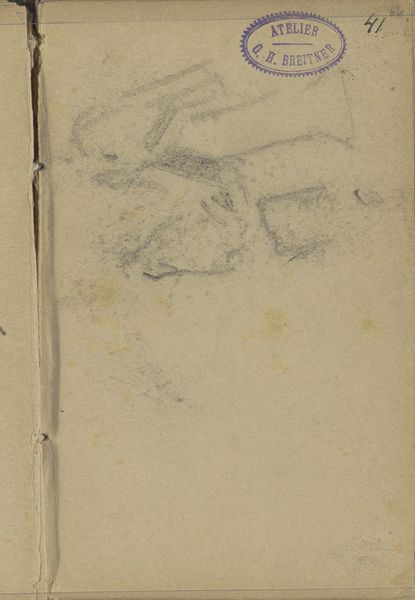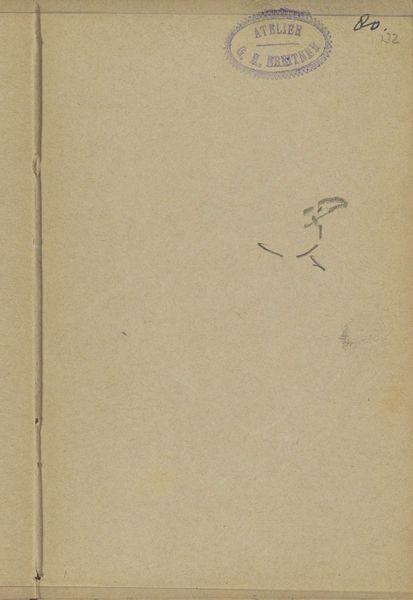
drawing, pencil
#
drawing
#
amateur sketch
#
aged paper
#
light pencil work
#
dutch-golden-age
#
impressionism
#
sketch book
#
hand drawn type
#
figuration
#
personal sketchbook
#
idea generation sketch
#
sketchwork
#
pencil
#
sketchbook drawing
#
sketchbook art
Copyright: Rijks Museum: Open Domain
George Hendrik Breitner made this sketch in the Netherlands, sometime between the late 19th and early 20th centuries. Although abstract, the 'Atelier G.H. Breitner' stamp suggests this was a preparatory work, revealing something about the institutional practices that govern artistic production. Breitner’s impressionistic style captured the changing urban landscape of Amsterdam and its working class. Given this social context, it is reasonable to assume that this sketch was intended to be used for a larger work depicting scenes of everyday life. Breitner's commitment to capturing the gritty reality of urban existence places him in opposition to the more romanticized and idealized depictions favored by the art establishment of his time. The historian can examine how the sketch relates to Breitner's other works and to what extent it reflects broader social and artistic movements. This might involve delving into archival sources, such as letters, exhibition catalogs, and critical reviews. Ultimately, this will show us how artistic meaning is always shaped by social and institutional forces.
Comments
No comments
Be the first to comment and join the conversation on the ultimate creative platform.
